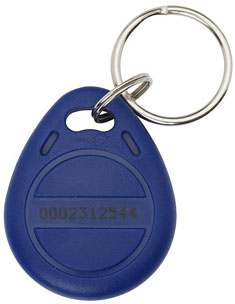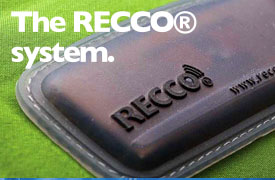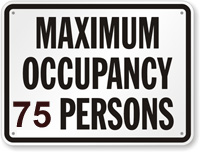Non-Unique RFID Fob / RF Reflector Used to Detect Human Presence and/or Human Proximity and/or Human Location invention
Our non-unique RFID Fob / RF Reflector Used to Detect Human Presence and/or Human Proximity and/or Human Location invention disclosure below was posted on 29 August 2011. It is one of five related RFID invention disclosures we posted today. We will make no changes to the invention disclosure that begins with text below the horizontal line following this paragraph except to correct misspellings, punctuation, and to update html/computer codes and links. Any updates to the invention will be posted below the horizontal line marking the end of the invention disclosure.
Passive RFID Fob Background Information
Radio Frequency Identification (RFID) reader antenna(s) power and activate passive RFID tags in their area. The activated tags broadcast their unique ID / serial number. Some RFID tags can then be queried for additional information.
One popular method of deploying RFID chips is as RFID fobs. They often resemble keychain tags and may or may not be stamped with their unique serial number. However, RFID fobs also come in many other shapes and formats.
RFID fobs are commonly used to gain access to certain areas, to defeat an anti-theft switch on your car, to inventory items (similar to barcodes), to open a database providing access to more information on the item tagged by the RFID fob, to track assets, to retrieve additional information stored on the fob, as a writable or rewritable place to store information, and for a host of other applications.
RFID fobs are built by many different manufactures, some manufacturers make several different series of fobs. Within each series, each tag has a unique ID / serial number (the number they broadcast when activated by a reader).
Some RFID fobs can be powered by the energy from the reader’s antenna(s). Once activated they broadcast their ID / serial number. Some RFID fobs can then be queried for additional information which they may encrypt before broadcasting. Some RFID fobs can be written to over and over, allowing systems to communicate with them and to write to them.
Detecting the Presence of Humans
Rather than repeat it, we cite the “Detecting the Presence of Humans” section of our Implantable Non-Unique RFID Tag / RFID Chip / RF Reflector Used to Detect Human Presence and/or Human Proximity and/or Human Location Invention disclosure of this same date and include it here by reference.
Non-Unique RFID Fob / RF Reflector Used to Detect Human Presence and/or Human Proximity and/or Human Location Invention
RFID fob series similar to those already on the market except the fob is not unique. When scanned it broadcasts the same ID /serial number as all of the others used for this task (for a specific version of this invention). For example, the all the fobs could broadcast a 16 digit number in which each digit is a “1” such as 1111111111111111.
The RFID fobs could be built by several different manufacturers. They would just have to all use the same agreed upon ID / serial number on every single RFID tag/ RFID chip.
As an alternative, unique RFID fobs (with their own unique serial number) or non-unique RFID fobs (all with the same serial number) could be programed to broadcast the same alphanumeric response, such as the word “HUMAN” when queried for additional information.
Humans wearing or carrying RFID fobs can be detected with RFID systems. Human non-unique RFID detection systems could be used in safety systems (a person is or is not where they belong), advertising systems (video plays when person walks by), in the work environment (seeing if somebody is really at a specific work station or not), in single employee clock in / clock out workplace time card systems, to remote activation (operating HVAC and lighting systems when people are in an area), in security applications, and a host of other applications.
Non-unique RFID systems could be used to count people in an area, to triangulate the location of people in two or three dimensions, and for many other purposes.
Non-unique RFID systems could be used to determine the proximity of humans to a certain location or object.
Non-unique RFID systems could be used to help locate people buried under debris, snow avalanches, building cave ins, earth / trench cave ins, and other disasters.
RECCO is well known for producing RECCO reflectors for finding people buried under snow avalanches. RECCO reflectors function similar to RFID tags but do not contain a serial number. RECCO reflector tags are primarily applied by sewing onto clothing, attaching to boots or helmets, or embedding in clothing. RECCO tags focus on reflecting as much energy as possible. They do not require a chip to modulate the energy to return a serial number.
A “RECCO like” fob could be designed similar to a RECCO reflector, in that the RF fob could be manufactured to reflect the maximum amount of energy, would not have a chip, and would not broadcast a serial number. Without the need to expend energy to modulate the antennae to broadcast a serial number, “RECCO like” RF reflector fobs could send back stronger signals allowing detection over greater distances. While “RECCO like” RF reflector fobs would not generate the same magnitude of signal as a RECCO reflector, they would generate a stronger signal than existing passive RFID fobs and could be used in all the applications discussed in this invention disclosure. “RECCO like” RF reflector fobs could also be used in search and rescue operations, but would obviously not perform equally to the much larger RECCO reflectors.
The antennae of the “RECCO like” RF reflector fob above could be manufactured to send back a few bits of data (see Chipless RFID). Those few bits of data could be all 1’s. This would help prevent the “RECCO like” RF reflector fob from being confused with other reflected signals.
Non-unique RFID systems could be used to count people passing a certain point (sort of a virtual turnstyle). The same non-unique RFID system (or another similar RFID system) could count people exiting. Alone or together, they could develop an estimate of occupancy.
One or more non-unique RFID systems working together (at one or more doors or entrances) could be used to estimate occupancy of certain areas (like Fire Code counts for bars or popular restaurants). They could remotely report counts, and issue alarms based on the number of people present.
References
- RECCO reflectors are used to find people under snow avalanches.
- RF and THz Identification Using a New Generation of Chipless RFID Tags. Etienne Perret, Maher Hamdiz, Arnaud Vena, Frederic Garet, Maxime Bernier, Lionel Duvillaret, Smail Tedjint. Radio Engineering. Vol.20. No.2. June 2011.
- All five RFID invention disclosures we made today.
It is clear that the present invention is well adapted to carry out the objects and attain the ends and advantages mentioned as well as those inherent therein. While some presently preferred embodiments of the invention have been described for purposes of this disclosure, numerous changes may be made which will readily suggest themselves to those skilled in the art and which are encompassed within the spirit of the invention disclosed and as defined in the appended claims.
Our Claims
We (Polson Enterprises, owner of the Propeller Guard Information Center) claim the the inventions described in this invention disclosure not previously legally claimed or patented by others and now make a public disclosure of them. At this time we retain all rights to these inventions. Any changes in that position will be placed in the Updates section below.
More specifically we claim:
1. Non-unique RFID fobs (multiple fobs with the same ID / serial number).
2. Non-unique RFID fobs for attaching to humans for use in combination with human presence detection systems.
3. Non-unique RFID fob for attaching to humans used in combination with human presence detection systems to protect humans from safety or health hazards that could result in injury or death.
4. RFID fob human presence detection systems above (Claims 2 through 3) in which RFID detection is also used in combination with other sensors to limit false positives.
5. RFID fob human presence detection systems above (Claims 2 through 4) in which RFID detection is used to triangulate the 2D or 3D position of the person or persons in the area.
6. RFID fob human presence detection systems above (Claims 2 through 5) that detect the proximity of the human or humans to a location or object.
7. RFID fob human presence detection systems above (Claim 6) that detect the proximity of the human or humans to a location or object and issues an alarm or takes other actions when necessary for the safety of the human or humans involved.
8. RFID fob human presence detection systems above (Claims 2 though 7) on agricultural equipment.
9. RFID fob human presence detection systems above (Claims 2 through 7) on mobile vehicles (boats, ATVs, PWCs, RVs, motorcycles, automobiles, trucks, buses, trains, subways, trams, airplanes, ships, submarines, tractors, mobile construction equipment, trenchers, and other mobile equipment).
10. RFID fob human presence detection systems above (Claims 2 through 7) on mobile vehicles (boats, ATVs, PWCs, RVs, motorcycles, automobiles, trucks, buses, trains, subways, trams, airplanes, ships, submarines, tractors, mobile construction equipment, trenchers, and other mobile equipment) that detect the presence or absence of the operator.
11. Non-unique RFID fobs used in combination with a human presence detection system to kill the engine(s) of a boat, personal watercraft (PWC), all terrain vehicle, snowmobile, or similar application if the operator is absent. Together they act as a replacement for conventional emergency engine cut-off switches (kill switches).
12. RFID fob human presence detection systems (Claims 2 through 11) remotely control a device or system, such as to turn on lights, music, or HVAC (heating, ventilation, and air conditioning) systems when humans enter a room and to turn them off after they leave (or a given time after they leave).
13. RFID fob human presence detection systems above (Claims 2 through 12) counts people entering or passing a certain point (sort of a virtual turnstyle).
14. The same RFID system described in Claim 13 (or another similar RFID system) counts people exiting.
15. A system consisting of one or more non-unique RFID systems working together (on one or more doors or entrances) (Claims 13 and 14) estimates occupancy of certain area, room, or building (like Fire Code counts for bars or popular restaurants).
16. A system consisting of one or more non-unique RFID systems working together (Claim 15) estimates occupancy of certain area, room, or building (like Fire Code counts for bars or popular restaurants) and reports the running count to one or more remote locations via telephone, wireless or hardwired connections, including via the Internet.
17. A system of one or more non-unique RFID systems working together (Claim 16) to estimate occupancy of certain area, room, or building (like Fire Code counts for bars or popular restaurants) issues an alarm (silent, visual, audio, email, or other form) when occupancy exceeds a certain limit (such as the maximum Fire Code Occupancy for the facility or some percentage of the maximum Fire Code Occupancy for the facility). Alarms could be issued locally and/or remotely via telephone, wireless or hardwired connections, including via the Internet to one or more locations.
18. RFID fob human presence detection systems above (Claims 2 through 17) in conjunction with systems of appropriate detection range for the task at hand.
19. RFID fob human presence detection systems above (Claims 2 through 17) in conjunction with systems of variable detection ranges or multiple detection ranges.
20. Non-unique RFID fobs that when activated, broadcast their the same ID / serial number, such as the 16 digit ID number of 1111111111111111.
21. Rewriteable non-unique RFID fobs.
22. Non-unique “RECCO like” RF Reflector fobs that broadcast the same number, such as 1111 or that broadcast the same bits such as 1111.
23. Non-unique RFID fobs that when asked to “tell me more”, broadcast the same alphanumeric response, such as the word “HUMAN”.
24. Non-unique RF reflector fobs in which the RFID fob resembles a RECCO reflector in that it is constructed to reflect the maximum amount of energy, does not contain a chip, does not broadcast a unique ID / serial number, and is approximately the size and of an RFID fob.
25. Human presence detection systems above (Claims 2 through 20) in which the RFID fob is replaced by the RF reflector fob described in Claim 24.
26. Use of any of the RFID fob or non-unique RF reflector fob human presence detection systems above (Claims 2 through 25) indoors in the workplace environment.
27. Use of any of the RFID fob or non-unique RF reflector fob human presence detection systems above (Claims 2 through 25) outdoors in the workplace environment.
28. Use of any of the RFID fob or non-unique RF reflector fob human presence detection systems above (Claims 2 through 27).
29. Non-unique RFID fobs or non-unique RF Reflector fobs that respond similar to the non-unique implantable RFID chips or implantable RF reflectors in our companion invention disclosure of this same date.
30. Substitute “traditional RFID fobs bearing their own unique ID / serial number” in Claims 1 through 29 for the phrase “non-unique RFID fob(s)” with fob(s) meaning fob or fobs. We recognize several of those applications are now legally claimed by others, but we hereby claim the remaining ones.
END OF INVENTION DISCLOSURE
Updates
Effective 29 August 2012 – We (Polson Enterprises and the Propeller Guard Information Center) now place all parts of the invention described above not previously patented by others in the public domain for use by all who wish to manufacture or use them. The world is certainly welcome to patent improvements to this invention but the basic concepts not previously patented by others are now open to all.
Comments
We encourage public comments about this invention disclosure, please leave them on the Summary Page of the Five RFID Invention Disclosures we made today.


